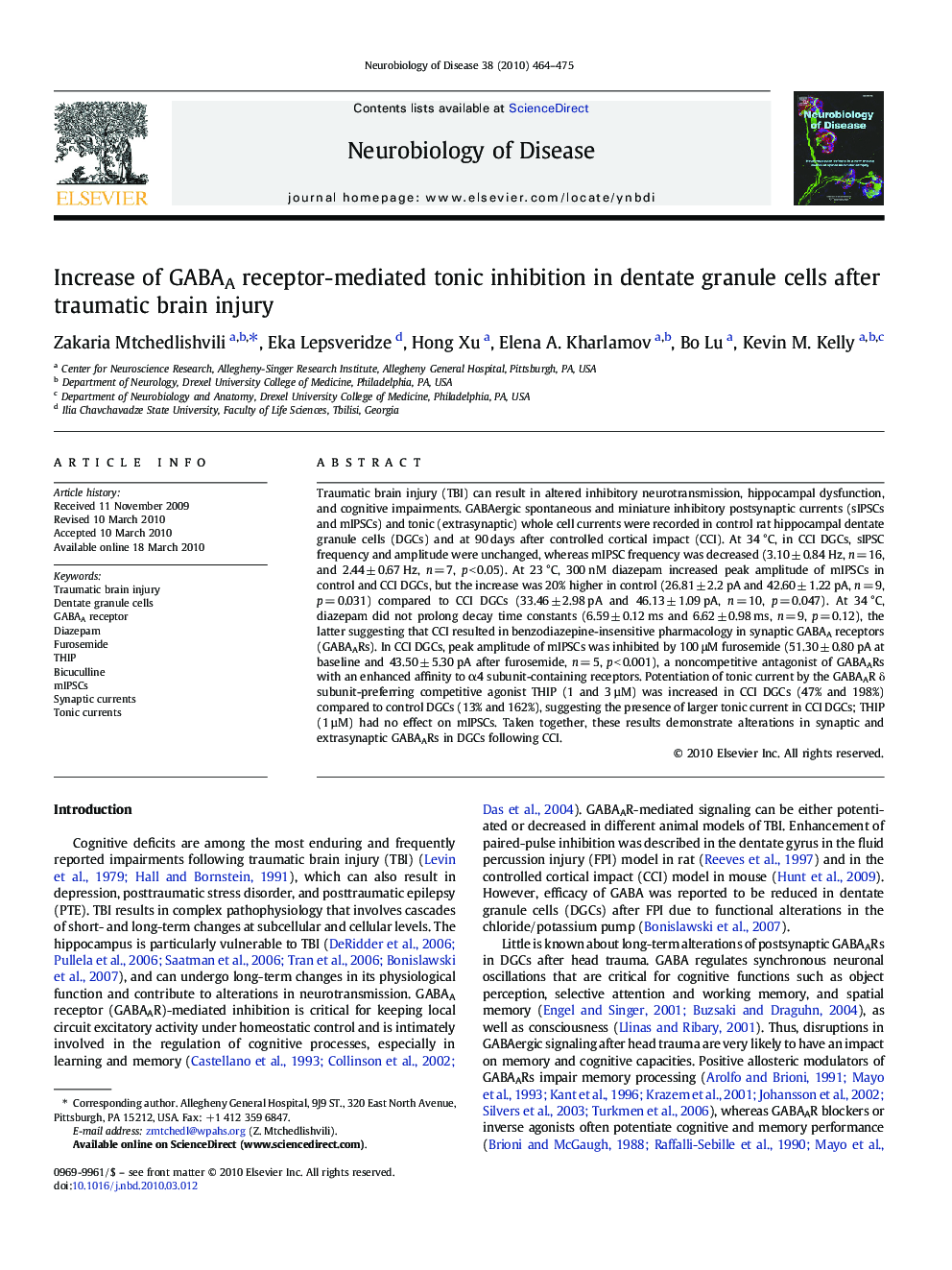| Article ID | Journal | Published Year | Pages | File Type |
|---|---|---|---|---|
| 3069809 | Neurobiology of Disease | 2010 | 12 Pages |
Traumatic brain injury (TBI) can result in altered inhibitory neurotransmission, hippocampal dysfunction, and cognitive impairments. GABAergic spontaneous and miniature inhibitory postsynaptic currents (sIPSCs and mIPSCs) and tonic (extrasynaptic) whole cell currents were recorded in control rat hippocampal dentate granule cells (DGCs) and at 90 days after controlled cortical impact (CCI). At 34 °C, in CCI DGCs, sIPSC frequency and amplitude were unchanged, whereas mIPSC frequency was decreased (3.10 ± 0.84 Hz, n = 16, and 2.44 ± 0.67 Hz, n = 7, p < 0.05). At 23 °C, 300 nM diazepam increased peak amplitude of mIPSCs in control and CCI DGCs, but the increase was 20% higher in control (26.81 ± 2.2 pA and 42.60 ± 1.22 pA, n = 9, p = 0.031) compared to CCI DGCs (33.46 ± 2.98 pA and 46.13 ± 1.09 pA, n = 10, p = 0.047). At 34 °C, diazepam did not prolong decay time constants (6.59 ± 0.12 ms and 6.62 ± 0.98 ms, n = 9, p = 0.12), the latter suggesting that CCI resulted in benzodiazepine-insensitive pharmacology in synaptic GABAA receptors (GABAARs). In CCI DGCs, peak amplitude of mIPSCs was inhibited by 100 μM furosemide (51.30 ± 0.80 pA at baseline and 43.50 ± 5.30 pA after furosemide, n = 5, p < 0.001), a noncompetitive antagonist of GABAARs with an enhanced affinity to α4 subunit-containing receptors. Potentiation of tonic current by the GABAAR δ subunit-preferring competitive agonist THIP (1 and 3 µM) was increased in CCI DGCs (47% and 198%) compared to control DGCs (13% and 162%), suggesting the presence of larger tonic current in CCI DGCs; THIP (1 µM) had no effect on mIPSCs. Taken together, these results demonstrate alterations in synaptic and extrasynaptic GABAARs in DGCs following CCI.
